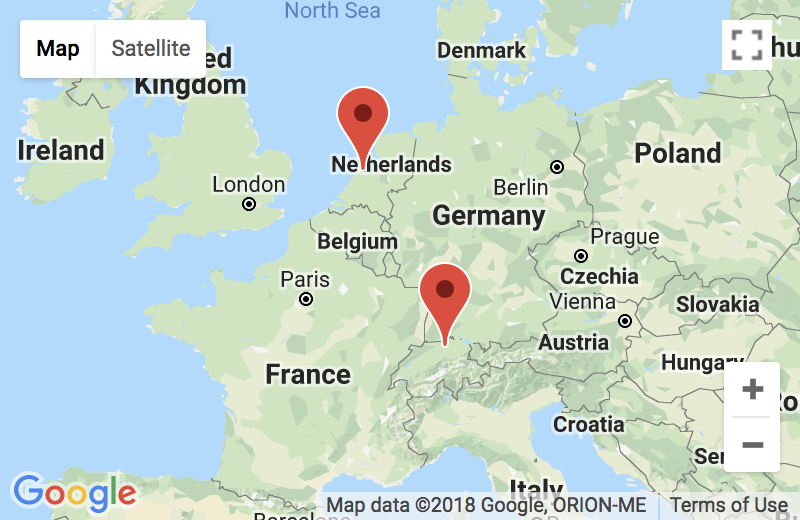About diamonds
Every diamond is different, incorporating a complex constellation of factors that determine the rarity of each stone. Although gemologists train for years to master the art and science of diamond appraisal, with a little basic instruction, anyone can learn how to read an appraisal and compare the grades of different stones. Each diamond is as unique as the person who owns it. Just as a diamond reflects the color of the light it bears, it should also reflect the personality of the individual who wears it. Herein lies the art of selecting a diamond, for yourself or as a gift for a loved one. Your knowledge of yourself, or your knowledge of a loved one, is expressed in your selection. Through your choice of a diamond, you are making a public statement about the loved one--and about your relationship--and that statement is repeated every time the diamond is worn. This is why, for many women, there is such mystique in diamond jewelry gifts, and why, for many men, there is such uncertainty in its selection. What is important in the selection of a diamond has little to do with the cost of the jewelry and much to do with the richness of the relationship.
Clarity
It is very common for diamonds to be formed with slight imperfections. These are known as "inclusions" and can come in many forms, including tiny white points, dark dots, or feathery cracks. The fewer inclusions, the more the stone is worth. A diamond's clarity ranking is determined by the number, size, type and placement of the inclusions.
Color
Most diamonds appear colorless but actually have slight tones of yellow or brown. The closer the stone comes to colorless, the more valuable it is. Diamonds are graded on a color scale ranging from D (colorless) to Z (heavily tinted.) Only a highly skilled professional will detect any color in E or F stones, and the color in diamonds rated up to J will be virtually invisible when set in a ring or other jewelry. Color is only one of the four C's so even when a stone has a visible tint, such as K or above, it can still be very lovely if it has good clarity and cut. How the diamond is set can make a difference, too; you might not want to put a truly colorless diamond in a yellow gold setting since the yellow color will reflect in the stone. On the other hand, a slightly yellow stone will appear whiter in a yellow gold setting. Diamonds also come in a wide variety of other colors, including red, blue, green and a bright yellow known as "canary." These are graded as Z+ and are known as "fancy" diamonds. Diamonds with good color are very rare and can sell for much more per carat than white diamonds. The following is the GIA color scale, which is very commonly used in the United States:
Cut
In the strictest definition of the term, "cut" is not the same thing as "shape" - for example, the most popular cut for a diamond is the round brilliant cut, but there are also round Swiss cuts, round Old European cuts, and round 144-facet cuts. For the most part, however, the terms are used interchangeably, including on this site. Although most diamonds on the market today are round brilliants, there are many different shapes available. The following chart shows some of the most popular shapes:
Carat
Carat is the term used to describe the weight of any gemstone, including diamonds. Although the definition of a carat has changed over time, since 1913 the international standard has been 200 milligrams, or 1/5 of a gram. Often, jewelers describe carats in 1/4 increments. In jewelry pieces with more than one diamond, the carats may be described in terms of total carat weight (TW). This is the combined total weight of all the stones in the piece. Diamonds can range in size from a fraction of a carat to several carats. Given the rarity of large stones, however, the price increases rapidly with size; therefore, a single 2-carat diamond will cost much more than two 1-carat diamonds. Very large diamonds with good color and clarity are very rare. Expect to pay a premium for stones that are above a full carat weight. For example, a .95 carat diamond will cost a bit more than a .90 carat stone, but a 1-carat stone will cost significantly more than a .95 carat stone.
What are GIA certified HPHT (High Pressure High Temperature) treated diamonds?
The HPHT (High Temperature High Pressure) treatment is called by some experts the “miracle” treatment. Considering that the treatment results in diamonds that are only distinguishable in a laboratorium from untreated diamonds using very specialized instruments. The HPHT process improves the color of the diamond. The prices of colorless HPHT diamonds can be 30% lower than untreated diamonds. Besides colorless diamonds the HPHT treatment can also result in color (fancy) diamonds. These color diamonds are with respect to color indistinguishable from untreated color diamonds. Only the prices of these fancy diamonds can be up to a factor 15 lower than untreated color diamonds. The expectation is that the value of these fancy HPHT diamonds will rise considerably the coming years. Considering the extreme scarceness of the source diamond material and the risks involved in the HPHT treatment.
The HPHT treatment in a nutshell:
1) It starts with brown diamonds. The brown is caused by plastic deformation in the lattice.
2) 2 types of brown:
Type 1: Diamond that contain lots of Nitrogen . Nitrogen is what can causes a Yellow color. No nitrogen causes colorless diamonds.
Type 2: Diamond that contain very small amounts of Nitrogen. Diamond that contain very little nitrogen can be the beautiifull colorless diamonds.
Two sub types:
Type 2b: This is type 2. Very little Nitrogen, but with Boron (Boron is what causes the blue color).
Typa 2a: is type 2 minus type 2b. This type 2a contains diamonds that contain very little nitrogen and no boron.
3) These different types of brown diamonds can be HPHT processed. This process means that the diamond is placed under very high pressure and at the same time the temperature is raised strongly. Temperatures go up to 2000 degress celsius. Which would normally change a diamond in to graphite. Only due to the high pressure the diamond lattice can be maintained. The aim of this treatment is to influence the lattice deformation that causes the brown color.
The HPHT treatment is very risky. The chance exists that the diamond breaks, gets damaged or even changes into to graphite.
4) After the treatment:
Type 1: These diamond with relative large amounts of nitrogen are changed into fancy yellow to greenish-yellow color, often with strong green fluorescence
Type 2b: These diamonds containing very little nitrogen, but do contain boron change into blue diamonds.
Type 2a: These diamonds with very little nitrogen and no boron change into colorless D-G diamonds. The HPHT process removes the lattice deformation causing the brown color to be taken out. Very sometimes pink or red diamonds are created. The pink and red color is a special form of lattice deformation.
The HPHT process is permanent and irreversibel. HPHT treated diamonds are often certified by the GIA. HPHT treated diamonds are very rare due to the risks involved in the HPHT process.
What are ring mounts?
A mount is the part of the diamond ring in which the diamonds are set. Most of our mounts are handmade. Depending on the chosen mount, the smaller side stone diamonds can be included in the price. This is indicated on the description of each mount. To get a complete diamond ring you must also choose the necessary loose diamonds. If you have questions about your ring size or other questions, please contact us. We also design and make mountings to your liking.
What are other mounts?
A mount is the part of the diamond jewel in which the diamonds are set. Most of our mounts are handmade. Depending on the chosen mount, the smaller side stone diamonds can be included in the price. This is indicated on the description of each mount. To get a complete diamond jewel you must also choose the necessary loose diamonds. If you have questions about your ring size or other questions, please contact us. We also design and make mountings to your liking.
What are complete rings?
A complete ring is immediately ready to wear. With a complete gem, the cost of the required diamonds, the cost of the mount and put in the price. If you have questions about your ring size or other questions, please contact us.
What are complete jewels?
A complete jewel is ready to wear. With a complete jewel: the cost of the required diamonds, the cost of the mount and the setting of the diamonds are included in the price. If you have questions please contact us.
Why would you buy handmade jewellry?
Handmade jewellry can be made specifically to your requirements. Handmade jewellry is only made in very small numbers. You can therefore be certain that almost no one else is wearing the same jewellry. At Van Amstel Diamond, our handmade jewellry is designed and created for lifelong enjoyment. Handmade jewellry is often forged from solid gold. This gives handmade jewellry a very durable feel. If you have questions, please contact us.
Why would you buy industrially manufactured jewellry?
Most of the jewellry stores sell industrial manufactured jewellry. Almost all branded jewellry is industrially manufactured. We distinguish ourselves to offer our high quality industrially made jewels for very competitive prices. Of course it is personalize your industrially manufactures jewellry by adding an engravement. If you have questions, please contact us.





